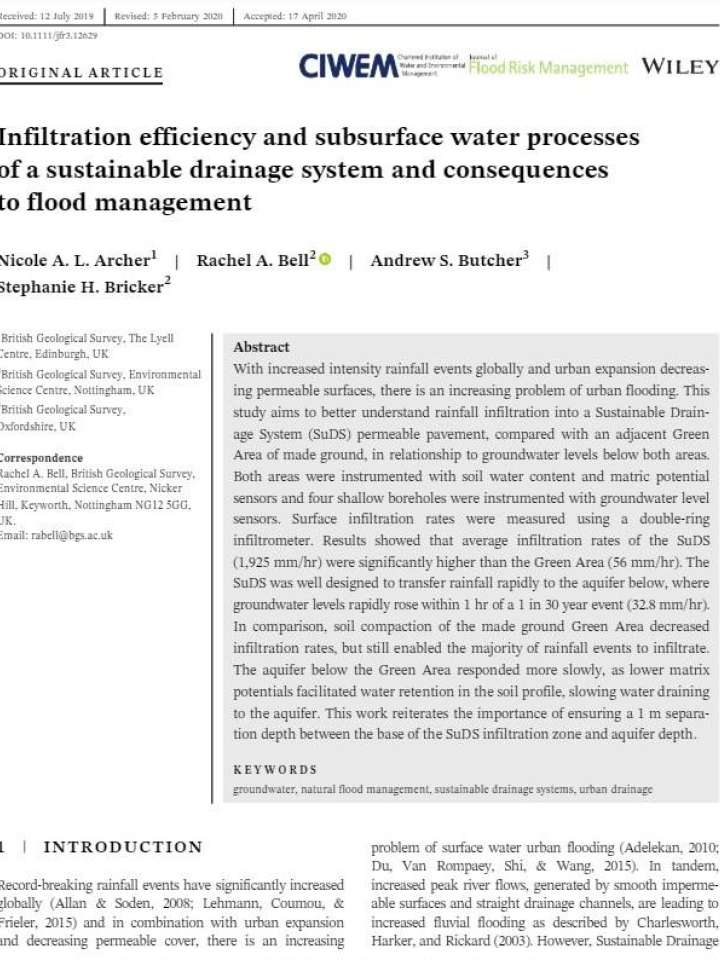Infiltration efficiency and subsurface water processes of a sustainable drainage system and consequences to flood management
With increased intensity rainfall events globally and urban expansion decreasing permeable surfaces, there is an increasing problem of urban flooding. This study aims to better understand rainfall infiltration into a Sustainable Drainage System (SuDS) permeable pavement, compared with an adjacent Green Area of made ground, in relationship to groundwater levels below both areas. Results showed that average infiltration rates of the SuDS (1,925 mm/hr) were significantly higher than the Green Area (56 mm/hr). The SuDS was well designed to transfer rainfall rapidly to the aquifer below, where groundwater levels rapidly rose within 1 hr of a 1 in 30-year event (32.8 mm/hr). This work reiterates the importance of ensuring a 1m separation depth between the base of the SuDS infiltration zone and aquifer depth.
This study shows the importance of thinking beyond the surface of the urban environment and understanding how the below-ground matrix retains and facilitates water to flow to deeper aquifers that may connect to nearby rivers and drains. Large scale SuDS similar to the design tested in this study will reduce runoff, but this runoff is then transferred rapidly to an unsaturated zone that connects to an aquifer (and potentially surface water features). On the other hand, green areas are able to infiltrate heavy rainfall and can retain rainfall within the unsaturated matrix, slowing down water to nearby rivers. Because of compaction problems of green areas, perhaps a combination of SuDS and green area would benefit urban environments, particularly if there are rivers nearby. The design of SuDS is, therefore, a trade‐off between infiltration and storage; SuDS allow infiltration of high rainfall intensities, where green areas do not have the capacity for such high infiltration flows
Explore further

